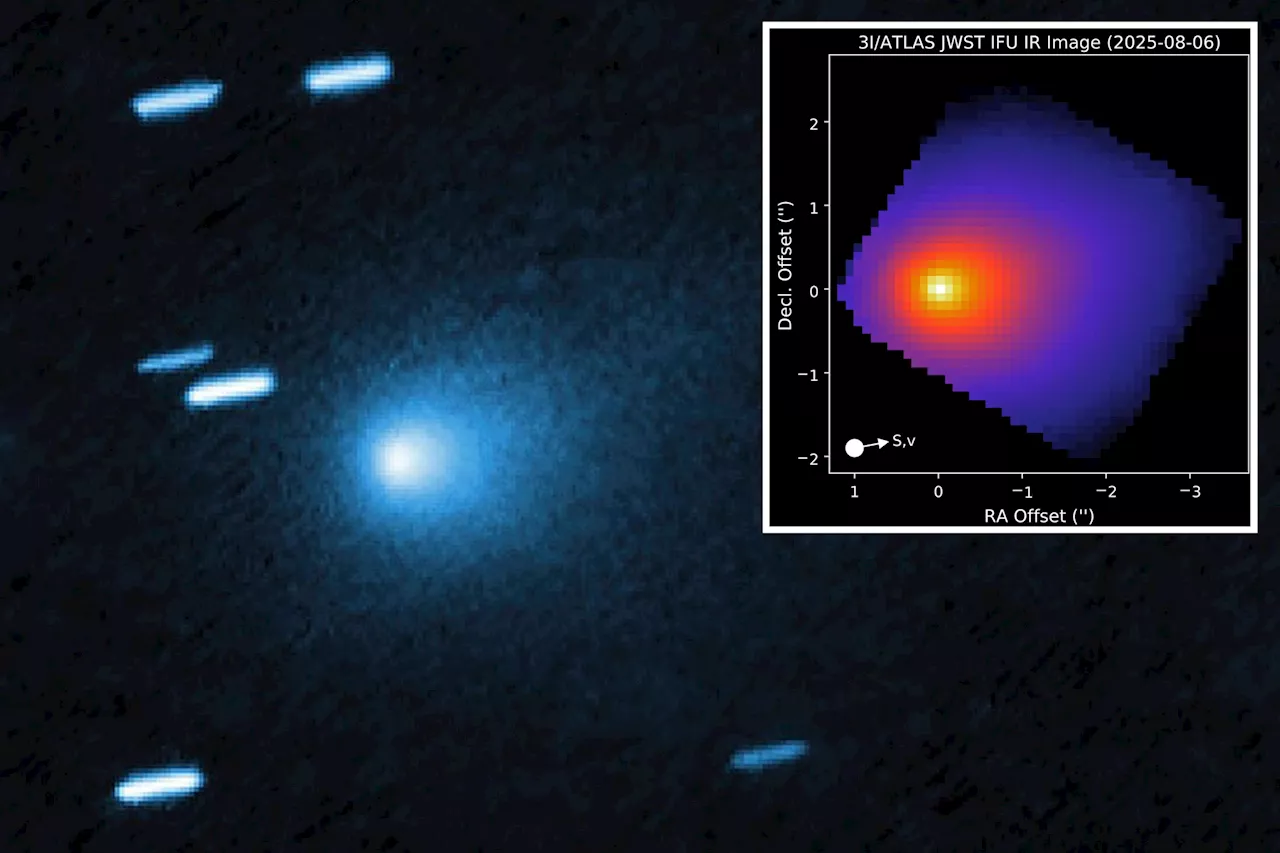Science
Interstellar Object 3I/ATLAS Emits Unique Metal Alloy, Harvard Scientist Reveals

A recent study has unveiled that the interstellar object known as 3I/ATLAS is producing a metal alloy never before seen in nature. This discovery was made by Dr. Avi Loeb, an astrophysicist at Harvard University, who reported that the object is emitting a plume containing four grams of nickel per second without any detectable iron. This phenomenon was observed using the Keck II Telescope in Hawaii, with images released on October 17, 2025.
The alloy produced by 3I/ATLAS is identified as nickel tetracarbonyl, a compound typically found only in industrial manufacturing. “There is only one place where that is known to exist, and that is in industrially produced nickel alloys,” Loeb stated. He emphasized that this is unprecedented for any celestial object, particularly comets.
Mystifying Features of 3I/ATLAS
Another intriguing aspect of 3I/ATLAS is its lack of a traditional cometary tail. Comets usually exhibit beautiful tails extending away from the Sun; however, this object shows no evidence of such a formation. Instead, images from the Hubble Space Telescope revealed a stream of material directed toward the Sun, flowing at a rate of approximately 330 pounds per second. “Why are we seeing a jet pointed at the Sun?” Loeb questioned, highlighting the unusual nature of this observation.
The composition of the stream includes primarily carbon dioxide and water, with trace amounts of cyanide and nickel but notably no iron. This distinct feature raises questions about the processes occurring in 3I/ATLAS and its interactions with solar radiation.
Awaiting Further Observations
As excitement builds among astronomers and space enthusiasts, many are eagerly anticipating additional images from the Mars Reconnaissance Orbiter. These images, captured between October 4 and October 7, 2025, are expected to provide critical insights into 3I/ATLAS during its brief journey through the inner Solar System. However, the release of this data has been delayed due to a government shutdown affecting NASA’s communications department.
Dr. Loeb expressed urgency regarding the need for scientific data, stating, “Who cares about the communication departments? We want to see the data from the scientists.” The data gathered from the HiRISE camera on the Mars Reconnaissance Orbiter will likely be the most detailed observations available, offering a unique opportunity to study this enigmatic interstellar visitor.
The findings surrounding 3I/ATLAS challenge existing knowledge about the materials present in our solar system and the behavior of interstellar objects, paving the way for further research and exploration in the field of astrophysics.
-

 Science2 weeks ago
Science2 weeks agoIROS 2025 to Showcase Cutting-Edge Robotics Innovations in China
-

 Politics2 weeks ago
Politics2 weeks agoJudge Considers Dismissal of Chelsea Housing Case Citing AI Flaws
-

 World2 weeks ago
World2 weeks agoBravo Company Veterans Honored with Bronze Medals After 56 Years
-

 Lifestyle2 weeks ago
Lifestyle2 weeks agoStone Island’s Logo Worn by Extremists Sparks Brand Dilemma
-

 Top Stories2 weeks ago
Top Stories2 weeks agoIndonesia Suspends 27,000 Bank Accounts in Online Gambling Crackdown
-

 Health2 weeks ago
Health2 weeks agoStartup Liberate Bio Secures $31 Million for Next-Gen Therapies
-

 Sports2 weeks ago
Sports2 weeks agoMel Kiper Jr. Reveals Top 25 Prospects for 2026 NFL Draft
-

 Health2 weeks ago
Health2 weeks agoTop Hyaluronic Acid Serums for Radiant Skin in 2025
-

 World2 weeks ago
World2 weeks agoHoneywell Predicts Record Demand for Business Jets Over Next Decade
-

 Politics2 weeks ago
Politics2 weeks agoNew Jersey Voters Urged to Register Ahead of November Election
-

 Lifestyle2 weeks ago
Lifestyle2 weeks agoMary Morgan Jackson Crowned Little Miss National Peanut Festival 2025
-

 Sports2 weeks ago
Sports2 weeks agoYamamoto’s Mastery Leads Dodgers to 5-1 Victory in NLCS Game 2









